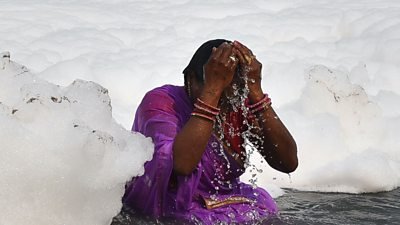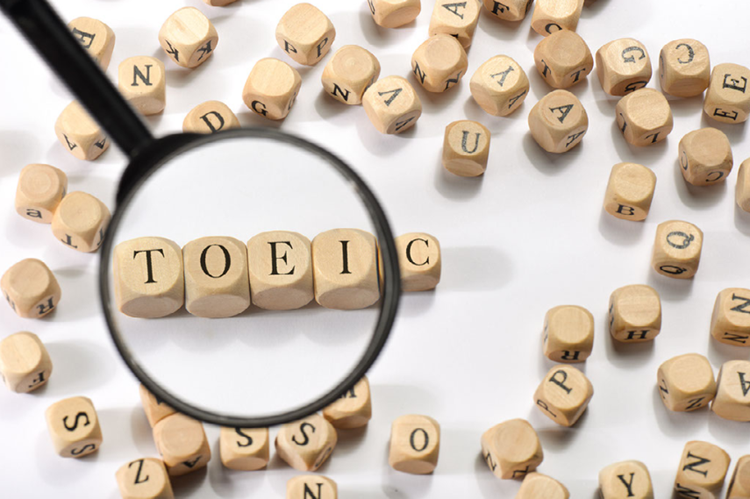
배경 스토리
인도에서 가장 신성한 강인 야무나(Yamuna) 강을 덮고 있는 유독성 거품 조차도 힌두교 신자들이 강에서 목욕하는 것을 막지 못했다. 힌두교 신자들은 태양신 수리야(Surya)에 바치는 4일 간의 축제인 차트 푸자(Chhath Puja)를 기념하기 위해 유독성 거품으로 뒤덮인 강에 들어가 기도했다. 지역 활동가들은 심각한 오염은 산업 폐기물과 처리되지 않은 하수의 불법 투기 때문이라고 비난했다.
관련 영상
PART 6
Question 135-138 refer to the following article.
The images appear to show a snow-covered river. The reality is that stretches of one of India’s most sacred rivers, the Yamuna, are covered with toxic foam 135 by industrial waste. The Yamuna, 136 India’s holiest river, the Ganges, are considered among the most polluted in the world. Activist Brij Khandelwal once described the Yamuna as “ecologically dead.” Sewage from Delhi and other cities, chemical waste from manufacturing plants are all part of the problem. 137 . Indians perform religious ceremonies, bathe and drink from the 855-mile Yamuna. The river provides three quarters of Delhi’s water needs, 138 a serious health threat to its 12 million residents and many other Indians who depend on it.
135.
A) cause
(B) causes
(C) causing
(D) caused
137.
(A) Holy rivers
are meant to be purifying
(B) The Yamuna is the
second largest after the Ganges
(C) Many people
are affected without knowing the consequences
(D) The Indian government has struggled with extreme water and air pollution
136.
(A) along with
(B) besides
(C) via
(D) beyond
138.
(A) intimidating
(B) confronting
(C) posing
(D) dealing
정답 및 해설
135. by 앞은 과거분사 자리이다. 피수식어 toxic foam과 수동적인 관계이므로 과거분사 caused가 맞다.
136. 함께, 더불어를 의미하는 전치사는 along with, together (with), in company with를 사용한다.
137. 빈칸 다음 문장에 인도인들은 야무나 강에서 종교적 의식을 행하고, 몸을 씻고 그리고 식수를 얻는다고 하므로 빈칸에 들어갈 말은 ‘신성한 강[야무나 강 지칭]은 사람의 영혼을 정화하는 것으로 여겨진다’가 적절하다.
138. 야무나 강에 의존하는 천 2백만 델리 시민들의 건강에 심각한 위협이 되고 있으므로 (C)가 적절하다. pose a threat to sth/sb ~에 위협을 가하다 intimidate 겁을주다, 위협하다 confront (문제나 곤란한 상황에) 맞서다, (위험한 상황에) 마주치다
해석 및 어휘
[해석]
겉보기엔 눈이 덮힌 강처럼 보인다. 135 실제로는 인도의 가장 신성시되는 강 가운데 하나의 지역이 산업 폐기물에 의해 발생된 유독한 거품으로 덮여있다. 136 야무나 강은 인도의 가장 성스러운 갠지스 강과 더불어 세계에서 가장 오염된 강에 속한다고 여겨진다. 환경 운동가 Brij Khandelwal는 일찍이 야무나 강은 생태학적으로 죽었다고 말했다. 델리와 기타 도시로부터 야무나 강으로 유입되는 오물과 제조 공장에서 만들어낸 화학 폐기물이 오염의 모든 근원이다. 137 신성한 강은 사람의 영혼을 정화하는 것으로 여겨진다. 인도인들은 855 마일에 이르는 야무나 강에서 종교적 의식을 행하고, 몸을 씻고 그리고 식수를 얻는다. 야무나 강은 델리의 물 수요의 4분의 3을 제공한다. 138 따라서 (야무나 강의 오염은) 야무나 강에 의존하는 천 2백만 델리 시민들의 건강에 심각한 위협이 되고 있다.
[어휘]
stretch (길게) 뻗은 지역 ecologically 생태학적으로 sewage 하수, 오물 chemical waste 화학 폐기물 be meant to be something ~인 것으로 여겨진다 pose a threat 위협이 되다



